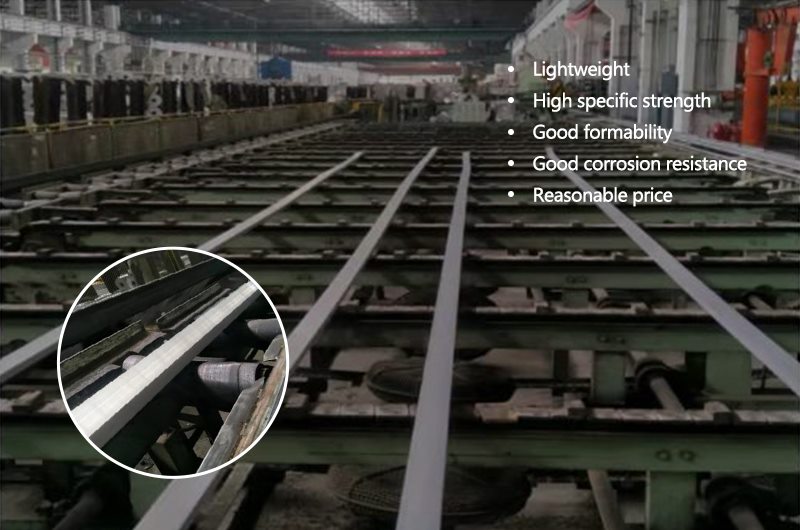
E-mail:
sales@chalcoaluminum.com
E-mail:
sales@chalcoaluminum.com
Email: sales@chalcoaluminum.com
Mobile:86 17344894490
NEWS
Al-Zn-Mg series aluminum alloys have been widely used in high-speed trains, subways, new energy vehicles and other fields due to their light weight, high specific strength, good formability, good corrosion resistance, and reasonable price. 7020 aluminum profile extrusion belongs to Al-Zn-Mg series alloy, which is mainly used for high-speed train underframe bolster, traction beam, large and small beams and bottom plate. Materials used for a long time in complex external environment, high load, frequent acceleration and deceleration, etc., are prone to premature fatigue and failure, and fail to reach the designed service life. Therefore, it is of great engineering significance to reveal the mechanism of 7020 aluminum profile extrusion micro-multiphase structure on the initiation and propagation of fatigue cracks to fracture, and to find out the control direction of multi-phase microstructure to improve the fatigue resistance of 7020 aluminum alloy.

1) When the stress ratio R is 0 and the fatigue limit life is 107 cycles, the fatigue strength of 7020 aluminum profile extrusion is 232.9 MPa. When the stress intensity factor at the crack tip is ΔK=8 MPa·m1/2, the fatigue crack growth rate of the alloy is about 6.44×10-5 mm/cycle.
2) Under the action of fatigue stress, the coarse refractory crystalline phase with a size of 3-12 μm is easy to crack itself or separate from the interface of the matrix due to the incompatibility with the deformation of the matrix to form a crack source. When the coarse refractory crystalline phase is in the range of the stress field at the tip of the fatigue main crack, it will accelerate the fatigue crack growth. The finely dispersed refractory crystalline phase slows down the crack growth rate due to dispersing fatigue stress, increasing crack section roughness, and inducing crack closure.
3) When the fatigue stress loading direction is the same as the extrusion direction, the alloy fatigue cracks mainly propagate in a transgranular manner. When the crack propagates to the small recrystallized grains with a large difference in plane orientation, the cracks tend to rapidly propagate along its high-angle grain boundaries. When the orientations of adjacent grains are the same, the expansion directions are similar and slowly expand in a transgranular manner. The lower the recrystallization degree of the alloy and its corresponding proportion of high-angle grain boundaries, the slower the crack growth rate.


